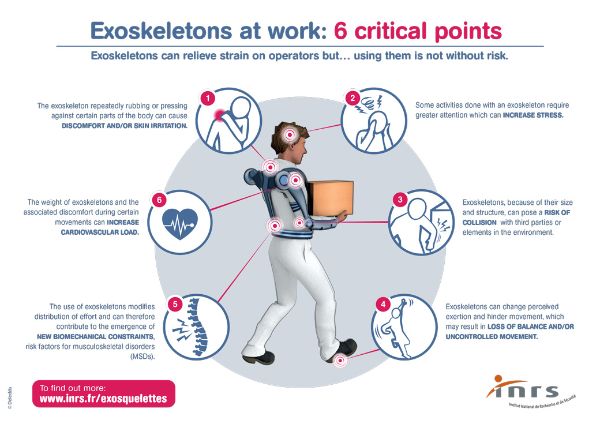Using exoskeletons at work : the message of prevention
Aimed at assisting employees with certains tasks, exoskeletons have created legitimate expectations of improvement in work conditions trough the reduction in physical load and the risk of musculoskeletal disorders (MSDs). INRS provides information about aspects to be taken into account in all projects to integrate exoskeletons.
The national research and safety institute (INRS) is conducting work on the benefits and limits of using exoskeletons. Previous studies show that this new physical assistive technologies can be effective in reducing muscular efforts. However, the use of exoskeletons in real work situations raises several questions about the interest and limitations of these devices for preventing occupational risks related to physical loads, as musculoskeletal disorders (MSDs). Far from an “out-of-the-box” solution, exoskeletons had to be integrated into a veritable prevention approach. The effects of their introduction into a workstation must be assessed and followed over time,” says Jean-Jacques Atain-Kouadio, assistant expert at INRS.
INRS has published an information sheet presenting six critical points associated with the use of exoskeletons, which include the risk of discomfort and/or skin irritation, increased stress, collision with third parties or elements in the work environment, etc.
INRS has also published a guide intended for OSH professionals, which allows companies to explore the many questions raised by the integration of exoskeletons. It proposes a methodological approach starting by the definition/evaluation of the needs for physical assistance and ending with its integration in real work situations.
Broken down into three phases, this method aims to assist companies as they give thought to acquiring exoskeletons, to create the conditions enabling their integration in the work situation and to assess the uses of the exoskeletons over time.
This methodological approach is resumed in a video

